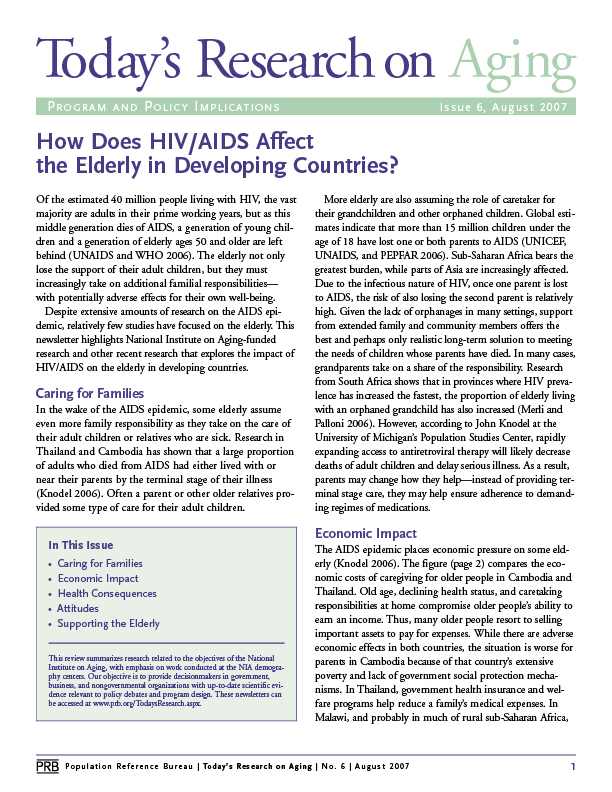The link between demographics and the economy is complex. “Give and Take Across Generations: How Changing Age Structure Can Lead to Economic Growth” presents a straightforward explanation of one facet of this important connection, by showing how lower fertility rates can benefit a nation’s economy.
We walk through an analysis that combines age-specific income and consumption patterns with population age structure, using data from the National Transfer Accounts (NTA) project. Thailand and Ethiopia serve as examples to illustrate how changing age structure can impact total income and consumption levels. This analysis shows that Ethiopia’s future age structure could create expendable income, a driver of economic growth and improved quality of life.
In this video, data for per capita income and consumption come from calculations completed by the NTA project. Income is defined as all compensation for work effort, including income, benefits, and certain government taxes. Consumption is the value of goods and services that meet an individual’s needs; this includes basic needs such as food and shelter as well as needs for services such as healthcare and education. A key assumption is that per capita income and consumption will stay the same for the future projected population scenarios.
Changing Population Age Structure: A PRB ENGAGE Snapshot (French)
- Télécharger le ‹‹ instantané ENGAGE›› (MP4: 24MB)
(août 2013) Les changements dans la structure d’âge de la population d’un pays peuvent être significatifs pour la croissance économique. Avec les exemples de Thaïlande et Rwanda, cet PRB ‹‹ instantané ENGAGE›› illustre les changements de la structure d’âge de la population utilisant des pyramides des âges. Cette vidéo s’adresse les trois investissements essentiels qu’un gouvernement puisse faire pour encourager les changements dans la structure d’âge de la population qui sont nécessaire pour un dividende démographique.
On peut voir cette courte vidéo en ligne ou télécharger pour une utilisation future. La vidéo peut être intégré dans PowerPoint et les autres présentations ou utilisé de façon indépendante comme un outil éducatif.








 ">
">